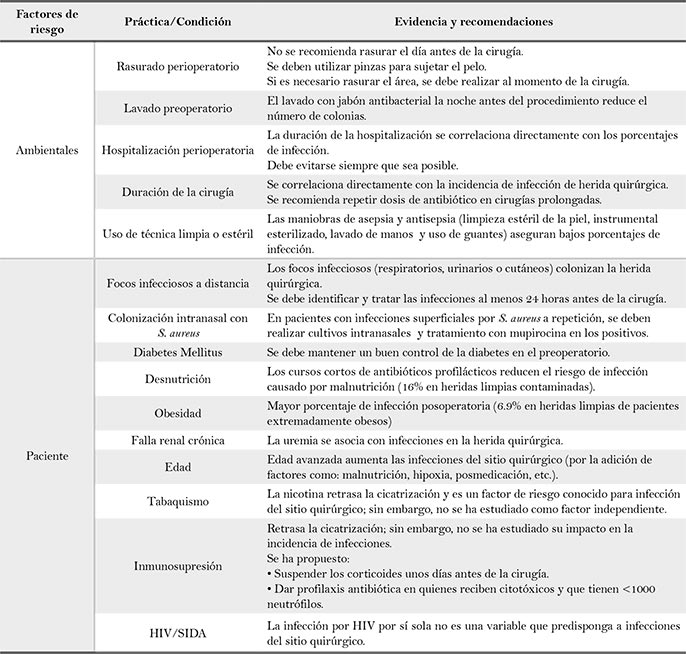Antibiotics in dermatologic surgery. When to use it?
Keywords:
Antibiotics, prophylaxis, surgeryAbstract
Wound infection rate in dermatologic surgery is low and is not necessary to provide antibiotic prophylaxis in the vast majority of these procedures. Nevertheless, antibiotics have been overused, increasing antibiotic resistance, cost and side effects. Decision of use antibiotic prophylaxis must be based on the risk factors for wound infections and for bacterial endocarditis, it is more important to correct these risk factors and use an appropriate aseptic technique. This is a review of existent evidence of topical, intra-incisional or systemic antibiotics to prevent surgical site infections and recommendations for prevention of bacterial endocarditis.
Author Biographies
Adriana Patricia Cruz
Residente III año Dermatología. Universidad Nacional de Colombia
Álvaro Acosta de Hart
Coordinador Clínica de Piel. Instituto Nacional de Cancerología. Profesor Asociado. Universidad Nacional de Colombia
Xavier Rueda
Dermatólogo. Clínica de Piel. Instituto Nacional de Cancerología.
References
2. Mangram AJ, Horan TC, Pearson ML, Silver LC, Jarvis WR. Guideline for prevention of surgical site infection. Am J Infect Control 1999; 27: 97-134..
3. Haas AF, Grekin RC. Antibiotic prophylaxis in dermatologic surgery. Am Acad Dermatol 1995: 32: 155-79.
4. Babcock MD, Grekin RC. Antibiotic use in dermatology surgery. Dermatol Clin 2003, 21: 337-48.
5. Haas AF. Antibiotics in Surgery of the skin. En Robinson JK, Hanke CW, Sengelmann RD, and Siegel DM.ed; Surgery of the skin. Elsevier 2005. 137-46.
6. Hurst EA, Grekin RC, Yu SS, Neuhaus IM. Infectious complications and antibiotic use in dermatologic surgery. Semin Cutan Med Surg. 2007; 26: 47-53.
7. Messingham MJ, Arpey CJ. Update on the use of antibiotics in cutaneous surgery. Dermatol Surg. 2005; 31(8 Pt 2):1068-78.
8. Arroyave M, González G. Infección Intra-hospitalaria: Prevención y control. Comité de control de infecciones. Hospital Universitario San Vicente de Paul. 3a. edición. 1999, 103-6.
9. Ammirati CT. Aseptic technique. En Robinson JK, Hanke CW, Sengelmann RD, and Siegel DM.ed; Surgery of the skin. Elsevier 2005. 137-46.
10. Hobbs ER. Surgical microbiology, antibiotic prophylaxis, and antiseptic technique. En Wheeland RG; Cutaneous surgery. W.B. Saunders Company 1994. 64-75.
11. Bencini PL, Galimerti M, Signorini M. Utility of topical benzoil peroxide for prevention of surgical skin wound infection. J Dermatol Surg Oncol 1994; 20: 538-40.
12. Smack DP, Harrington AC, Dunn C, Howard RS, Szkutnik AJ, Krivda SJ, et al. Infection and allergy incidence in ambulatory surgery patients using white petrolatum vs bacitracin ointment. A randomized controlled trial. JAMA 1996;276: 972-7.
13. Bencini PL, Galimberti M, Signorini M, Crosti C. Antibiotic prophylaxis of wound infections in skin surgery. Arch dermatol 1991; 127:1357-60.
14. Griego RD, Zitelli JA. Intraincisional prophylactic antibiotics for dermatologic surgery. Arch Dermatol 1998; 134: 688-92.
15. Acosta AE. Antibióticos profilácticos intraincisionales. ¿la solución a la infección en cirugía dermatológica? Carta al editor. Arch Dermatol (versión española) 1998; 9: 294-5.
16. Maragh SL, Otley CC, Roenigk RK, Phillips PK; Division of Dermatologic Surgery, Mayo Clinic, Rochester, MN Division of Dermatologic Surgery, Mayo Clinic, Rochester, MN. Antibiotic prophylaxis in dermatologic surgery: updated guidelines. Dermatol Surg. 2005; 31:83-91.
17. Baran CN, Sensoz O, Ulusoy MG. Prophylactic antibiotics in plastic and reconstructive surgery. Plast Reconstr Surg 1999; 103:1561– 6.
18. Weber RS, Callender DL. Antibiotic prophylaxis in cleancontaminated head and neck oncologic surgery. Ann Otol Rhinol Laryngol Suppl 1992;155:16– 20.
19. Rodrigo JP, Alvarez JC, Gómez JR, Suárez C, Fernández JA, Martínez JA. Comparison of three prophylactic antibiotic regimens in clean-contaminated head and neck surgery. Head Neck 1997; 19: 188– 93.
20. Monaco G, Staffolani C, Gatto MR, Checchi L. Antibiotic therapy in impacted third molar surgery. Eur J Oral Sci 1999; 107: 437– 41.
21. Futorian T, Grande D. Postoperative wound infection rates in dermatologic surgery. Dermatol Surg 1995; 21: 509-14.
22. Dixon AJ, Dixon MP, Askew DA, Wilkinson D. Prospective study of wound infections in dermatologic surgery in the absence of prophylactic antibiotics. Dermatol Surg. 2006;32:819-26; discussion 826-7.
23. Gaspar Z, Vincuillo C, Elliott T. Antibiotic prophylaxis for full-face laser resurfacing: is it necessary? Arch Dermatol 2001; 137:313– 5.
24. Walia S, Alster TS. Cutaneous CO2 laser resurfacing infection rate with and without prophylactic antibiotics. Dermatol Surg 1999; 25:857– 61.
25. Halpern AC, Leyden JJ, Dzobow, McGinley KJ, McGinley KJ. The incidence of bacteremia in skin surgery of the head and neck. J Am Acad Dermatol 1988; 19:112-6.
26. Dajani AS, Taubert KA, Wilson W, Bolger AF, Bayer A, Ferrieri P, et al. Prevention of bacterial endocarditis: recommendations by the American Heart Association. Circulation 1997; 96:358-66.
How to Cite
Downloads

Downloads
Published
How to Cite
Issue
Section
| Article metrics | |
|---|---|
| Abstract views | |
| Galley vies | |
| PDF Views | |
| HTML views | |
| Other views | |






